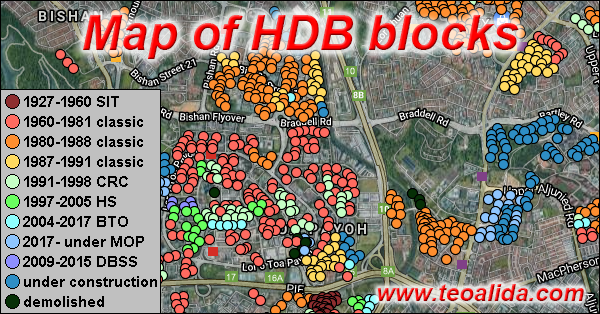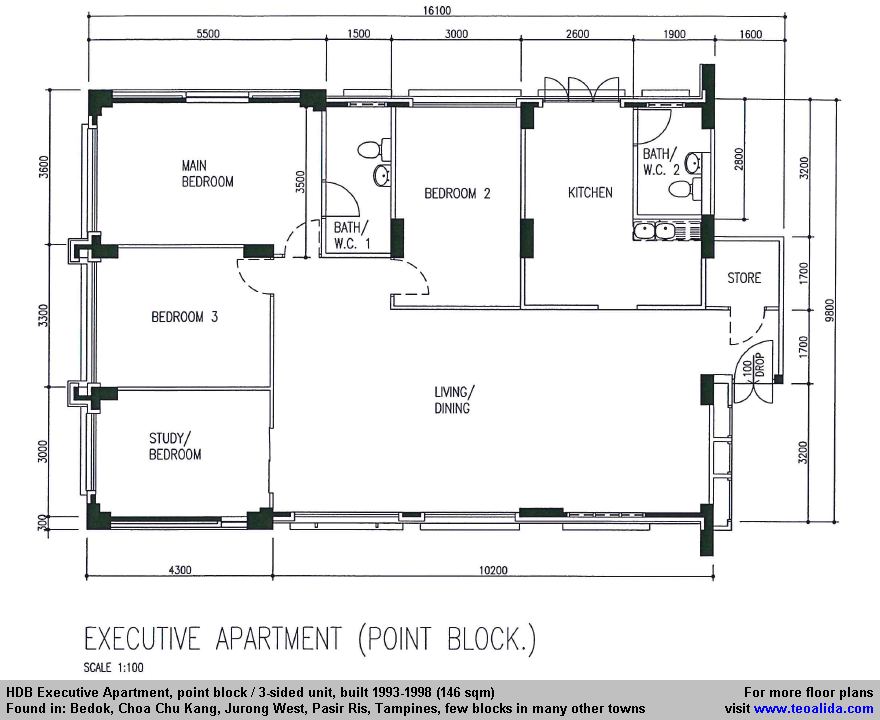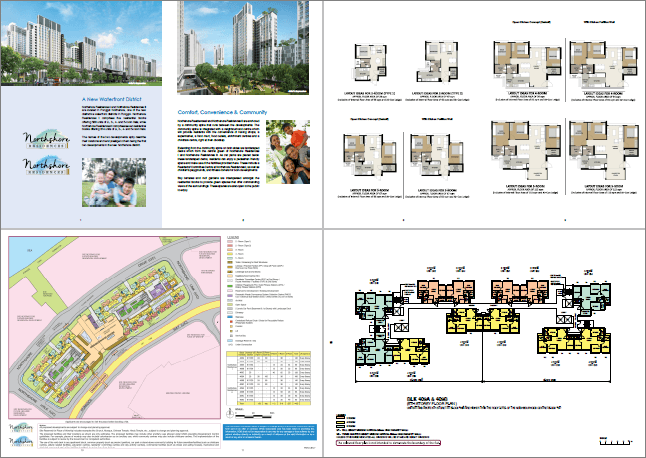Properties in Singapore are by two types: freehold and leasehold. Leasehold in case of private residential buildings is 999 years, 99 years (or 103 years with 4 years construction time), or in rare cases, 60 years. Other buildings types can have shorter leases. All HDB flats except Studio Apartments are leased on 99 years.
There is also Temporary Occupation Permit (TOP) or a Certificate of Statutory Completion (CSC), Private properties lease commence date is when land was sold, while when they are listed for sale, TOP year is indicated. When HDB launch a BTO project it indicate CSC date. Read more: https://www.propertyguru.com.sg/singapore-property-resources/property-tips/what-is-a-temporary-occupation-permit-top-9316.
For HDB blocks, the 99-year lease starts usually after up to 1 year from when construction is finished, I do not know if lease commence date is identical with CSC date, and this rule does not apply for pre-1973 blocks, in which lease commence date is the date at which HDB decided to sell / allowed tenants to buy their flats.
Construction time lasted 2-3 years in 1990s and 3-4 years in 2000s and today. Household shelter appeared in HDB Annual Report 1996 and first blocks have leases from 1998.
Home Ownership Scheme was introduced in 1964, but oldest HDB leases are from 1967. HOS was piloted in Tiong Bahru pre-war blocks in 1965-1967 and people could use CPF to purchase their flats, they are also the only SIT/HDB flats transacted as private properties (source: tiongbahruestate.blogspot.com). So, in 1967 they realized how to implement HOS without privatization?
Lease commence date is usually building completion year + 1, with some exceptions. Actually building date do not have so much importance like lease commence date. Most blocks built during 1960s were leased to owners in stages from 1967 to 1973. Tiong Bahru blocks built in 1948-1954 blocks have leases from 1973. Redhill blocks built in 1955 have leases from 1983. Some 1970s 2-Room blocks were reserved for rental until 1986 when HDB starting leasing them to owners. Other 2/3-Room blocks remained rental blocks forever, for example Dakota Crescent blocks, scheduled for demolition in 2017. The 1970s and 1980s blocks converted during 1990s into Jumbo flats have leases from the year of conversion.
What happen when 99-year lease expire
We are not 100% sure what happens.
Few years ago I saw a funny guy saying in a forum that Freehold property remains yours forever while a Leasehold means that you will be kicked out at end of lease, and another guy correcting him: Government can take over both leasehold and freehold properties, but only freehold owners are rewarded at full value. Also owners can apply for lease extension.
Lorong Tiga Estate (Lorong 3 Geylang) are the first properties to have their leases ended (allegedly built by SIT in 1958 but they were private properties with 60-year lease ending on 31 December 2020). The land returned to state and I am not aware of any compensation given to owners, just that they were allowed to apply for new HDB flats (normally you are eligible to buy HDB flats only if you do not own any property). There are no other private residential leases on 60 years. Fuyong Estate is the next one to have its 99-year lease expiring, in 2047.
Oldest HDB leases are from 1 Jan 1967 so they will expire at end of 2065, I suggest you to not care too much about reaching end of lease. Some paranoid people thinks that if you purchase a flat with less than 60 years old of lease, you cannot resell it. WRONG, you can still sell, buy buyer cannot use CPF is remaining lease is under 30 years. The only reason for which flats became harder to sell even with half of lease remaining, is the increasing number of such paranoid people. Is rumored that when remaining lease is 50%, property value is 70% of its value as new. Value is expected to drop significantly only when lease goes less than 30 years.
During 1990s, the old estates built in 1960s and 1970s suffered from dilapidated buildings, aging population and businesses moving out. On resale market Queenstown and Ang Mo Kio were cheaper than Pasir Ris, one of the cheapest towns today (source: Resale flat prices database). To counter this, HDB launched Main Upgrading Programme in 1990, Interim Upgrading Programme in 1993 and Selective En-bloc Redevelopment Scheme in 1995.
Between 1995 and 2007, 71 SERS sites were announced. This created widespread rumors among population that any 1960s and 1970s block can get SERS, increasing demand for old flats, people buying 1960s and 1970s flats on purpose to have their block demolished and receive a new flat at subsidized price. Currently, blocks leased in 1966-1980 are priced higher per sqm than blocks leased in 1981-2000. Due to this reason, is no longer viable for HDB to redevelop old blocks, number of new SERS sites announced dropped dramatically.
Between 2008 and 2018, only 10 SERS sites were announced, total 7883 flats. At this rate, 306 years are required to replace all 241343 flats built between 1971 and 1980.
I believed that HDB is waiting for the old flats to get closer to their end of lease when their market value will drop significantly, then increase number of SERS sites.
On 19 August 2018 HDB announced that only 5% of total sold flats are eligible for SERS, of which 4% have been selected already. For all other flats there will be VERS (Voluntary En-bloc Redevelopment Scheme) that will start in approximately 20 years from now (probably near 2036 when first leases reach 70 years old). Polls will be made in each precint and they require 75% of owners to vote to go VERS or keep living in their flats until leases run out.
Due to rapid and short development of towns like Ang Mo Kio (1976-1982), Bedok (1974-1986), Marine Parade (1975-1978), HDB cannot VERS all blocks once they are 70 years old, so they will be redeveloped stages when they are between 70 and 90 years old. Details such as selection criteria, compensation offered, etc, and how VERS will be financed, are not yet decided, leading to speculation. Think that in 20 years many things can change!
HDB construction rate peaked in early 1980s, so in 2050s a lot of flats will have less than 30 years of lease and CPF cannot be use anymore. How this will affect housing market?
Is rumored that 99-year leasehold properties have 60% value of freehold ones when remained lease is 30 years, and 40% when remained lease is 15 years, according to Bala’s Table.
Use CPF for property purchase with less than 60 years of lease
- No CPF can be used if the remaining lease of a property is less than 30 years.
- A property owner is eligible to use his CPF for the property if his age plus the remaining lease of the property is at least 80 years
- The maximum amount of OA savings you can use is capped at a percentage of the property purchase price or the value of property, whichever is lower.
The above applies to all Housing & Development Board flats bought on or after 1 July 2013. The maximum amount of CPF savings that can be used for such property is set at a level that covers the estimated depreciated value of the property when the youngest eligible owner using his/her CPF savings for the property reaches 55 years old. This is to ensure prudent use of a member’s CPF savings when buying properties with shorter remaining lease.
You may refer to our brochure (PDF, 1.3MB) for more information or use our Property with Less Than 60 Years Lease Calculator to decide your eligibility and the maximum amount of CPF savings that you can use.
Part of above article is copied from https://www.cpf.gov.sg/Members/FAQ/schemes/housing/housing-scheme#faq2185500

Source of the chart: StraitsTimes




I really like your blog and you have shared the whole concept really well. And Very beautifully soulful read, thanks for sharing.
An impressive share! I’ve just forwarded this onto a co-worker who was doing a little homework on this.
And he actually bought me lunch due to the fact that I stumbled upon it for him…
lol. So allow me to reword this…. Thank YOU for the meal!!
But yeah, thanks for spending some time to discuss this matter here on your web page.
Thanks a lot for sharing this info, it has solved some of the mysteries I had for quite a while researching on sers sites being a lift enthusiast (Eg, why is Blk 112 Bukit Merah View lease year 1971 when it was only completed in 1973, then other blocks the lease year is after completion year, like Blk 321 Clementi lease was in July 1978 when it was completed in around late 1977.) it’s really hard to come across people who are as passionate as you in such things and you effort and hard work would definitely be appreciated by some people. Perhaps if you’re looking for constructive criticism about your website you might want to change to using a website domain (eg. Square space) if you do not mind the costs? I think it would look more aesthetically pleasing but your own domain that you have painstakingly designed yourself looks quite ok itself.
Thanks to clear my confusion regarding 99-year lease expire. It’s true that Leasehold properties usually have 60% when remained lease is 30 years. I have property which was 25 year old so, Now, I have get great information from your blog post.
I appreciate your article and thanks for sharing valuable content on your website. I bookmarked your website for further article to read.
Nice one. But, do you have any articles related to real estate?
It’s unusual to find someone with your level of interest in these topics, and your work will likely be appreciated by some. If you don’t mind the extra expense and want honest feedback on your website, you could wish to switch to a website domain (like Square Space). Personally, I believe it would look better, but I also think your own domain, which you’ve obviously spent a lot of time designing, is rather nice.